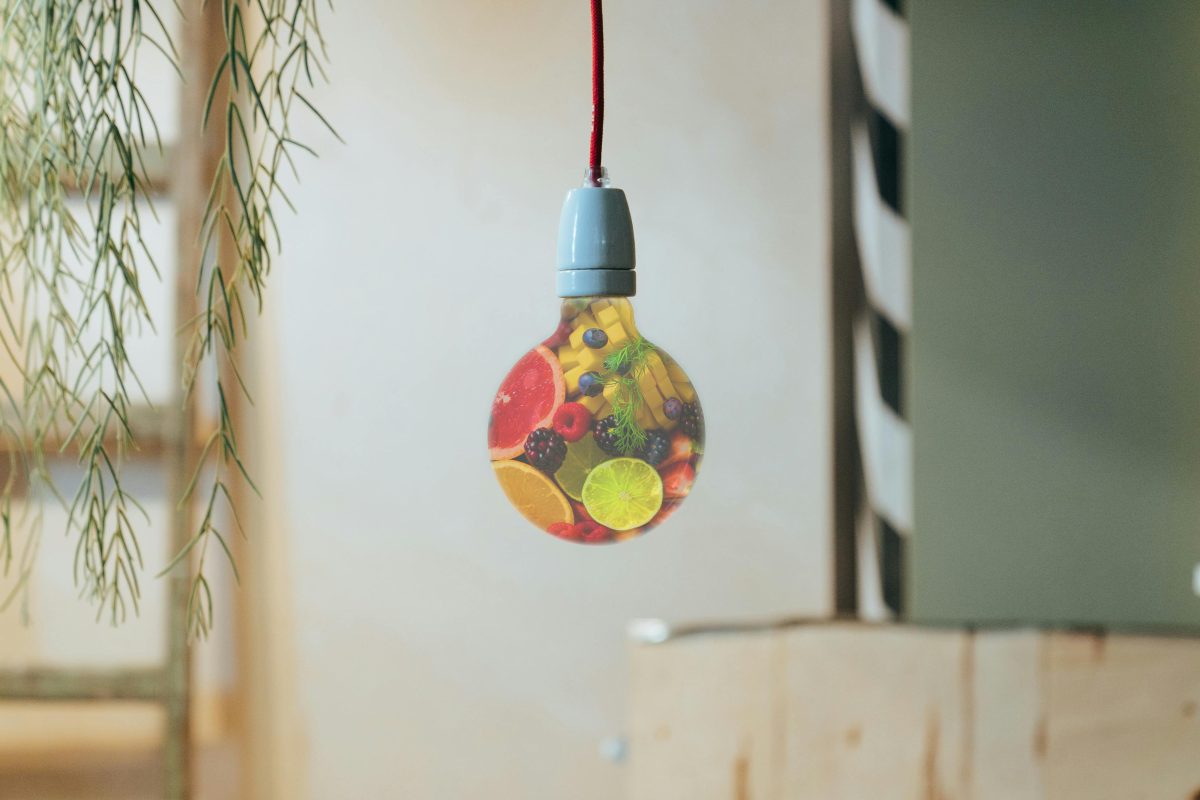College students get a bad rap when it comes to managing our nutrition. We either buy too much junk food, spend too much money ordering DoorDash, or go three days without consuming anything other than iced coffee and leftover french fries. Aside from finances and proximity to good food, which influence our shopping, many of us may still need to form strategic grocery shopping habits. As someone who stopped eating out regularly over a year ago, I’ve realized that if you want to eat healthy in college, you must stop eating out. When you eat healthy food more consistently, your cravings will begin to transform. An appetite for foods lower in salt and fat will replace your speed dial for Taco Bell. However, the on-campus lifestyle and stores don’t make it easy to stop craving outside food.
Many people don’t enjoy cooking and lack a desire for fresh and homemade food. It’s not necessarily bad to prefer fast food, but making those same dishes you love dearly at home will eliminate much of the high fat and salt in outside food. Not only can you personalize the food you make at home to your taste, but eating in will naturally increase your intake of better food and “better for you” ingredients.
Everyone also has different cravings that drive their purchasing choices at the grocery store. Growing up in an Indian household made me accustomed to having freshly prepared food available as often as possible. Even when we didn’t have a large budget, my parents always ensured we had more fruit and vegetables than breaded goods or frozen meals. Thanks to that environment, I find myself craving homemade food and whole ingredients even when they aren’t very accessible to me.
This is one of many habits immigrant families have that makes them the lowest at risk group in America– many other cultures place a high value on cooking whole foods and mealtime exchanges. To the excuse that you don’t have enough time to prepare meals, my father would say, “What is filling your time more than food? If your job is too stressful and keeps you from eating, maybe you should point a finger at your time-consuming job instead.” Food is at the center of our lives, and it literally keeps us alive. Why not invest more time in the quality of what we consume?
This time to refuel and nourish your body is also a time to connect and share with others. Sharing a meal is sacred and not to be taken lightly. In my family, refusing to eat with someone tells them they are not worthy to share such an important experience with. Even if we are angry with each other, my father will still make extra parathas for me to take to work every morning. When the family disagrees, we are still expected to help with food preparation and cooking dinner. I’ve come to admire the high value placed on food in my household even more now that I live far away as a college student.
But before focusing on our health, we must be given the resources and opportunities to do so. A study in 2023 found that one-third of the UT student body is food insecure or experiences food insecurity in some way. While the school has taken action to combat this high number, we as a student body need to cultivate a more accessible and judgement-free environment around students needing help.
A few weeks ago, I visited the UT Outpost on my own. The Outpost is a donation-based food pantry and career closet on campus for all UT students with a valid EID. This valuable resource can be found on the edge of campus directly behind the Student Services Building off of Dean-Keeton. Yet, for my first time going, it was challenging to find. I walked confidently into the Student Services building after my GPS took me there. I did not ask the information desk for help because I felt I could find a room alone. After looking everywhere for the correct room number, and finding a gorgeous gender-neutral bathroom with free tampons and pads available, I asked someone on the third floor, “Where is the UT Outpost?”
“The what? I’ve never heard of that.” This was already off to a great start.
We asked her friend if maybe she knew. She said many students came there looking for it, but sadly, she didn’t know how to find it. I went to the first-floor information desk. The student seated there was obviously involved in homework and seemed annoyed when I asked about the UT Outpost. She spoke to me, barely looking up from her homework. “If you go out these doors to the right, go across the street. It’s right there.”
Per her directions, I found myself in front of a building labeled “Student Housing and Dining.” I did not think this was the right building, so I approached the two girls at the front desk with less confidence. However, I was still determined.
I asked again, “Where can I find the UT Outpost?”
They shared a side-eye in confusion. They could tell I looked defeated, though, so they suddenly spoke over each other, trying to reassure me. “It’s definitely on this street.” “It’s just two doors down.”
“So, it’s not this building?”
“No, of course not. This is housing and dining. But you’re pretty close.”
I started to tell the girls it was okay. I would just give up on looking for it at this point. But an unseen woman started shouting from the office behind them as I began to leave, “No! No! I’ll just show her. It’s okay, I’ll show you where it is!”
Out from behind the desk ran a woman in burnt orange and khakis with flowing silver hair. Without hesitation, she motioned for me to follow her as she opened the door for us both. “Hi, I’m Lauren. I’m gonna make sure you get there today.”
Immediately, my notions of giving up were gone. Lauren introduced herself as someone who often volunteers at the Outpost, so it made sense for her to take me there herself. She clarified that the UT outpost is in the UA9 which is directly behind the Student Services Building, tucked into a small alcove of other offices. As we walked up, we could see the proud white and green sign on the second floor (third from the ground floor) that read “UT Outpost.” She even showed me the almost hidden stairs that lead up to the next floor so I would be sure to make it right on my own the next time I wanted to visit. Lauren said she was unsure exactly how it worked for walk-ins, but I should still drop in and ask. Online, it says walk-ins are always available, and the amazing volunteers at the Outpost confirmed this for me when I arrived.
As for my experience, once I got there, it was incredible. As soon as I walked into the UT Outpost, I was greeted by a very exuberant young student volunteer who seemed much more excited for me to be there than I was. He explained the rules of the Outpost. All I did was submit my UT EID. Names were optional, and discretion was paramount to each volunteer. Even when I was getting my food weighed at the end of my visit, I expected them to go through my bag and mark everything I took for inventory purposes. But they didn’t. The guy checking me out did not even touch my bag, let alone look inside it. He asked me if I felt comfortable sharing my name; if not, just my student ID was ok. Beyond that, anything they knew was up to me and what I wanted to share.
I was astounded by the amount of fresh foods and dry pantry goods that fit into the two small main rooms of the Outpost. The volunteers were all very sweet, and they moved out of my way as I shopped and restocked. The cold room with all the fresh veggies, bread, and dairy products was a tight squeeze, but the other students shopping there were very polite, and we all moved around each other with a shared sense of accommodation.
It can be stressful or embarrassing to need help to find basic needs such as food or clothing. In my trek to see the Outpost, I encountered people who knew or didn’t know about the Outpost and its benefits. On both sides, some people wanted to help me, and some were unwilling to go the extra step and instead expected me to figure it out myself. Of course, we cannot all be Lauren, who took the time to walk me to the Outpost, but I hope we all have Laurens appear when we need one. Her kindness touched me not because I was lost and needed direction but because I needed someone to show me understanding and sensitivity.
Eating healthier starts with eating at home, but not everyone can easily do that. Food accessibility programs provide a good starting point for taking control of your home cooking. Yet having access to fresh food does not automatically make everyone eat healthier. We need our habits and cravings to align with a desire to eat that way.
Whether it be the time, money, or skill inconvenience, there is something unappealing about making your food in American culture. This tells me we must change our cultural attitude around what meals and food should look like. Taking the time to cook with friends is a great way to encourage cooking at home, and turns your potentially frustrating evening of following a recipe into a fun hang-out with others who are learning along with you. Some sites can provide you with food recipes you already have, but there are also people all around you with their own experiences and insights into food. What would happen if we just started asking our friends to cook or to share a meal? Even if it doesn’t come out right the first time, there is only room for improvement. Food is a communal need and experience that connects us all. We should strive to not take it for granted.


































